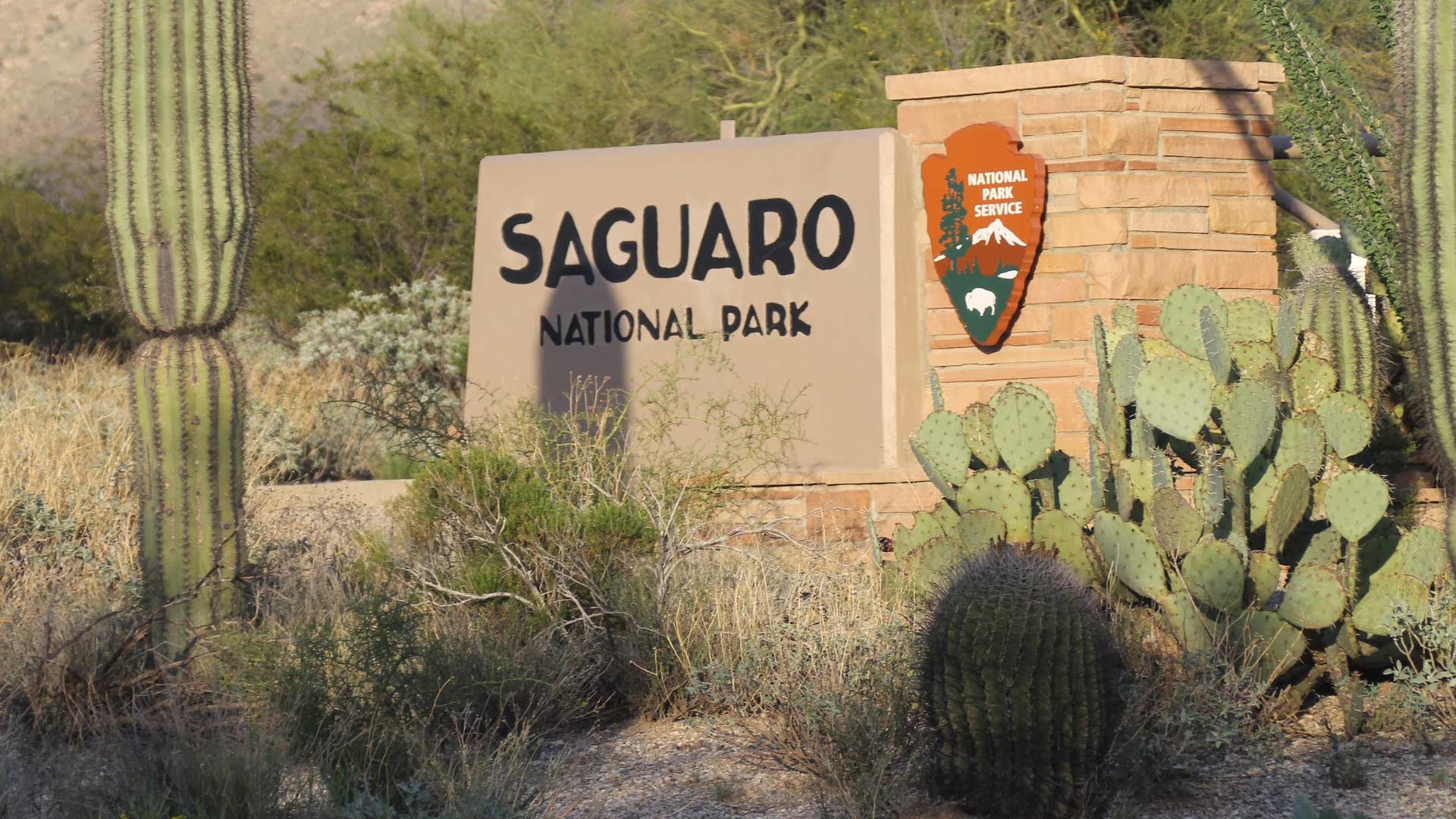 The entrance to Saguaro National Park east.
The entrance to Saguaro National Park east.
The U.S. Department of the Interior (DOI) granted Arizona $10.3 million for the restoration of the state’s lands and waters, courtesy of funding from the Biden-Harris Administration's Investing in America Agenda.
The allocated funds will be directed towards locally-led, landscape-scale restoration projects including mining risk assessment, invasive species surveillance, and the development of climate-adapted seeds.
Shannon Estenoz, assistant secretary for Fish and Wildlife and Parks made the announcement during a visit to Saguaro National Park on Wednesday, Feb. 21.
“As the climate crisis threatens biodiversity, wildlife, communities, and their economies everywhere, investing in our landscapes and expanding nature-based solutions are critical to maintaining that connection to the land for future generations,” Estenoz said.
The award follows the DOI’s recent announcement of $157 million in investments from the Bipartisan Infrastructure Law (BIL), to support 206 ecosystem restoration projects nationwide, with a focus on benefitting historically underserved communities.
To date, the DOI has channeled over $15.6 million from the BIL, to Arizona.
Estenoz emphasized the alignment of this initiative with President Biden’s Justice 40 Initiative, which aims to deliver 40% of the overall benefits of climate, clean energy, and related investments to disadvantaged communities.
 VIEW LARGER Shannon Estenoz, assistant secretary for Fish and Wildlife and Parks with the Department of Interior and city of Tucson, Mayor Regina Romero at Saguaro National Park on Wednesday, Feb. 21, in Tucson, Ariz. Estenoz made the announcement that Arizona would receive $10.3 million for ecosystem restoration projects.
VIEW LARGER Shannon Estenoz, assistant secretary for Fish and Wildlife and Parks with the Department of Interior and city of Tucson, Mayor Regina Romero at Saguaro National Park on Wednesday, Feb. 21, in Tucson, Ariz. Estenoz made the announcement that Arizona would receive $10.3 million for ecosystem restoration projects. The assistant secretary was joined by Tucson Mayor Regina Romero, who highlighted the significance of preserving Arizona’s natural wonders, specifically mentioning the iconic saguaro cactus.
“It’s emblematic of the Southwest and a vital component of the Sonoran Desert and it faces a dire threat from the invasive buffelgrass species,” Romero said.
Buffelgrass, a grass plant native to Africa, Asia, and the Middle East, is highly flammable and is known to outcompete native vegetation such as cacti, for water and nutrients.
In the previous fiscal year, Saguaro National Park received $300,000 from the BIL to collaborate with contractors, along with underserved and tribal youth to combat the invasive species.
Romero expressed gratitude for the support provided by the BIL in safeguarding the biodiversity and natural beauty of the unique desert landscape.
Andy Hubbard, a scientist with Saguaro National Park, emphasized that these investments will address long-standing issues within the parks.
“We know for invasive species and ecosystem restoration projects in particular, the science of that tells us that usually you have to have a large resource intensive effort to do an initial treatment and then we can follow those up with maintenance treatments,” Hubbard said.
Estenoz highlighted that the recent investments build upon two previous allocations and must be officially obligated within this fiscal year.
“There will presumably be two more years of tranche funding because this is five-year money,” Estenoz said.
The Investing in America Agenda, allocated $2 billion over five years for new investments across the U.S. and follows a “restoration and resilience” framework to support cross-agency work.
“There’s this old saying in the park service that parks run on interns and volunteers– that is absolutely true,” Hubbard said. “We’re going to be developing the next group of young scientists and park stewards as part of these projects.”

By submitting your comments, you hereby give AZPM the right to post your comments and potentially use them in any other form of media operated by this institution.